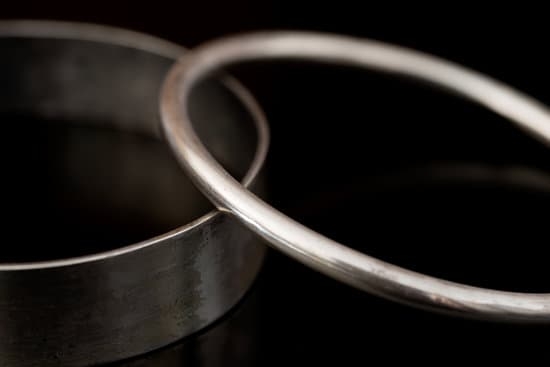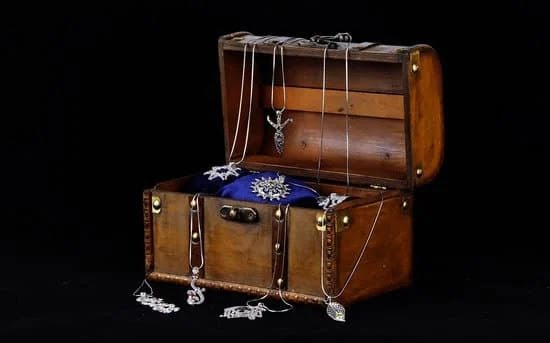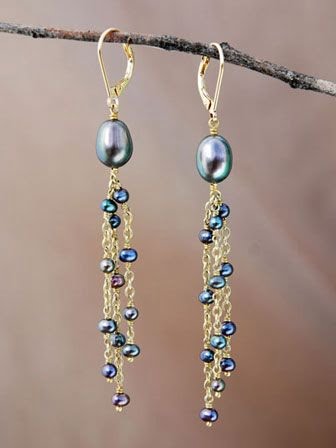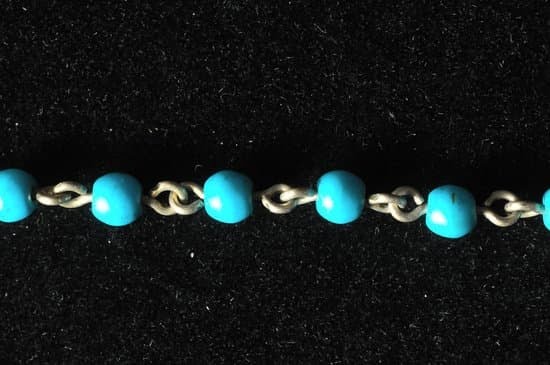Jewelry making is a timeless craft that allows for endless creativity and personalization. One way to elevate your jewelry pieces is by learning how to paint jewelry beads. As simple as it may seem, adding a touch of color can completely transform the look of your beads and enhance the overall aesthetic of your creation.
Painting jewelry beads is not just about adding a pop of color; it also allows you to experiment with different designs, patterns, and textures. Whether you’re looking to create a statement piece or a subtle accent, painting your beads opens up a world of possibilities for customizing your jewelry. From vibrant hues to metallic finishes, the choice of colors and techniques are endless.
In this article, we will explore the importance of painting jewelry beads and how it can enhance the overall look of your pieces. We will provide a detailed list of materials needed, step-by-step guides on preparation, tips on color selection, various painting techniques to try out, instructions on drying and curing painted beads properly, suggestions for adding finishing touches, troubleshooting common issues that may arise, and showcase inspiring projects for creative inspiration.
Stay tuned to unleash your inner artist and elevate your jewelry-making skills.
Materials Needed
When it comes to painting jewelry beads, having the right materials is crucial in achieving the desired results. Before diving into the creative process, it is essential to gather all the necessary supplies to ensure a smooth and successful painting experience. Here is a detailed list of materials you will need:
First and foremost, you will need a variety of beads to paint. Choose beads in different shapes, sizes, and materials based on your design preferences. Make sure the beads are clean and free from any dirt or debris before starting the painting process.
Next, select high-quality paints specifically designed for use on jewelry beads. Acrylic paints work well for most bead materials such as wood, glass, or plastic. Ensure that you have a good selection of colors to bring your creative vision to life.
Invest in a set of fine-tipped brushes for precise painting on small surfaces like beads. Different brush sizes can help you achieve various details and effects in your designs. Additionally, consider having some paint palettes or containers for mixing colors and blending shades seamlessly.
Other supplies you may need include a primer for prepping the bead surface before painting, a clear sealant for protecting the painted beads from wear and tear, and paper towels or cloths for cleaning up any spills or excess paint. Having all these materials ready will make the process of painting jewelry beads both efficient and enjoyable.
Whether you are a seasoned crafter or just starting out with jewelry making, having the right materials at hand is key to creating stunning painted beads that will elevate your handmade pieces to new heights. With this comprehensive list of supplies, you can confidently embark on your journey of transforming ordinary beads into unique and personalized works of art.
Let your creativity shine as you explore various techniques and color combinations to create one-of-a-kind painted jewelry beads that will surely catch everyone’s eye.
Preparation
Preparing your beads for painting is a crucial step in ensuring a successful and long-lasting outcome. Before diving into the creative process, it is important to properly clean and prime your beads to create a smooth surface for the paint to adhere to. Here is a step-by-step guide on how to prepare your beads for painting:
Cleaning
Start by cleaning the beads thoroughly with a gentle soap and warm water solution. Use a soft brush or cloth to remove any dirt, dust, or oils that may prevent the paint from sticking properly. Rinse the beads well and allow them to dry completely before moving on to the next step.
Sanding
If your beads have a glossy finish or are made of materials like glass or metal, lightly sanding them with fine-grit sandpaper can help create a rougher surface for better paint adhesion. Be sure to wipe away any dust residue after sanding before proceeding with priming.
Priming
To ensure that the paint adheres smoothly and evenly to your beads, it is recommended to apply a primer suitable for the material of your beads. Use a small brush or sponge applicator to apply an even coat of primer, allowing it to dry completely before starting the painting process. Priming will also help seal porous materials like wood or clay, preventing them from absorbing too much paint.
By following these steps for preparing your jewelry beads for painting, you are setting yourself up for success in creating beautiful and unique pieces that showcase your creativity and style. Taking the time to properly clean, sand, and prime your beads will result in a professional-looking finish that will withstand wear over time. Now that your beads are prepped and ready, you can move on to selecting colors and exploring different painting techniques to bring your vision to life.
Color Selection
When it comes to painting jewelry beads, choosing the right colors is a crucial step in creating a stunning and eye-catching piece. The color palette you select can make a significant impact on the overall look and feel of your jewelry. Whether you’re following current trends or sticking to your personal style, here are some tips on how to choose the perfect colors for your painted beads.
One important factor to consider when selecting colors for your jewelry beads is the latest trends in fashion and accessories. By staying up-to-date with popular color schemes and combinations, you can create pieces that are both stylish and appealing to a wide audience. Consider looking at fashion magazines, runway shows, or even Pinterest boards for inspiration on trending colors and palettes.
However, personal preference should also play a significant role in your color selection process. Your jewelry should reflect your personality and unique style, so don’t be afraid to experiment with different color combinations that speak to you personally. Whether you prefer bold and vibrant hues or subtle pastel shades, the key is to choose colors that make you feel confident and express your individuality through your jewelry designs.
Experimenting with different color combinations is part of the fun of painting jewelry beads. Don’t be afraid to mix and match various shades to create a unique and one-of-a-kind piece.
From complementary colors that create harmony to contrasting colors that make a statement, there are endless possibilities when it comes to choosing the right colors for your painted beads. Remember that ultimately, the most important thing is that you love the final result of your painted jewelry beads.
Painting Techniques
Painting jewelry beads can truly transform a simple piece into a work of art. The techniques used in painting beads can vary from simple solid colors to intricate designs, allowing for endless creativity and customization. Whether you are a beginner or an experienced crafter, exploring different painting techniques can elevate your jewelry-making skills to the next level.
When it comes to painting jewelry beads, there are several techniques that you can experiment with to achieve unique and stunning results. Here are some popular methods to consider:
- Solid Color Painting: This is the most basic technique where you simply apply a single color of paint to the bead for a clean and classic look.
- Ombre Effect: For a more trendy and gradient effect, consider using multiple shades of the same color or different complementary colors to create a beautiful ombre effect on your beads.
- Intricate Designs: If you have a steady hand and love detail work, try painting intricate designs like flowers, geometric patterns, or even tiny landscapes on your jewelry beads for a one-of-a-kind piece.
Experimenting with these various painting techniques can add depth, dimension, and personality to your jewelry beads. Don’t be afraid to mix and match different styles to create pieces that truly reflect your individual style and creative vision.
Remember, practice makes perfect when it comes to mastering how to paint jewelry beads. Start with simple techniques and gradually work your way up to more complex designs. With time and patience, you’ll develop your own unique artistic style that will set your jewelry creations apart from the rest.
Drying and Curing
To properly dry your painted jewelry beads, place them on a flat surface away from direct sunlight or heat sources. Allow them to air dry for at least 24 hours before handling them further. If you are in a rush, you can use a hairdryer on a low, cool setting to speed up the drying process, but be careful not to overheat the beads as this can cause damage.
After the beads are completely dry, it’s time to cure them for long-lasting results. The curing process involves either air-drying the beads for an additional 24-48 hours or baking them in the oven at a low temperature according to the paint manufacturer’s instructions.
Baking can help set the paint and make it more resistant to wear and tear. Once cured, your painted jewelry beads will be ready to use in creating stunning pieces that will last for years to come.
| Benefits of Properly Drying and Curing Painted Beads | Precautions During Drying and Curing Process |
|---|---|
| Ensures durability and longevity of painted designs | Avoid overheating beads during drying or curing |
| Makes colors stay vibrant over time | Follow manufacturer’s instructions for optimal curing results |
Adding Finishing Touches
When it comes to painting jewelry beads, adding finishing touches can truly elevate the overall look of your piece. Whether you want to add some sparkle with embellishments or ensure the durability of your painted beads with sealants, there are various ways to enhance the final result. Here are some suggestions on how to add those finishing touches:
- Embellishments: Consider adding rhinestones, pearls, or small charms to your painted beads for a touch of glamour and uniqueness. You can use jewelry glue to securely attach these embellishments onto the beads.
- Sealants: To protect the paint and ensure its longevity, consider applying a sealant over the painted beads. There are different types of sealants available such as glossy or matte finishes. Make sure to follow the instructions on the sealant product for proper application.
Adding these finishing touches not only adds a personal touch to your jewelry beads but also helps them stand out and withstand everyday wear and tear. Experiment with different embellishments and sealants to find the perfect combination that complements your painted beads.
Remember that while adding embellishments can enhance the aesthetics of your jewelry beads, it’s essential to strike a balance between decoration and functionality. Sealants play a crucial role in protecting the paint from chipping or fading over time, ensuring that your painted beads remain vibrant and beautiful for years to come.
Troubleshooting
When painting jewelry beads, it is not uncommon to encounter some common issues that may arise during the process. Whether it’s the paint not adhering properly, colors bleeding into each other, or uneven coverage, these problems can be frustrating. However, with the right tips and techniques, these issues can be easily resolved.
One common issue that may occur when painting jewelry beads is the paint not sticking or adhering properly to the surface. This can happen if the beads are not adequately cleaned or prepared before painting.
To fix this problem, make sure to thoroughly clean the beads with a mild soap and water solution, rinse them well, and allow them to dry completely before painting. Additionally, you can try using a primer specifically designed for bead painting to ensure better adhesion of the paint.
Another issue that you may come across is colors bleeding into each other, especially when using multiple colors on the same bead. To prevent this from happening, make sure to allow each color layer to dry completely before applying another one.
You can also use a fine-tip brush for more precise application of colors and try sealing each color layer with a clear sealant before moving on to the next one. This will help create clean lines and prevent bleeding between colors.
Uneven coverage is another common problem when painting jewelry beads that can affect the overall look of your piece. To address this issue, make sure to apply thin, even layers of paint and allow each layer to dry completely before adding another one. You can also try using different painting techniques such as dabbing or stippling for more even coverage.
Additionally, rotating the bead while painting can help ensure that all sides are evenly coated. By following these troubleshooting tips, you can overcome common painting issues and achieve beautiful results when painting your jewelry beads.
Inspiration
Painting jewelry beads can truly transform a simple piece into a stunning work of art. By adding color and personality to your beads, you can create unique and customized jewelry that reflects your style and creativity. Whether you are a seasoned crafter or just starting out, learning how to paint jewelry beads opens up endless possibilities for creating one-of-a-kind pieces.
To begin this artistic journey, it is essential to gather all the necessary materials listed above including beads, paint, brushes, and other supplies. The key lies not only in the materials but also in the preparation process. Cleaning and priming the beads before painting ensures a smooth canvas for your colors to shine bright.
When it comes to choosing colors for your jewelry beads, consider current trends as well as your personal preferences. Whether you opt for bold and vibrant hues or subtle pastels, selecting the right color palette sets the tone for your entire piece.
Experiment with different painting techniques such as solid color painting, ombre effects, or intricate designs to achieve the desired look for your jewelry beads. Remember, practice makes perfect – so don’t be afraid to get creative and try new techniques to elevate your bead painting skills.
Frequently Asked Questions
What Paint to Use to Paint Beads?
When it comes to painting beads, it’s important to use acrylic paint or craft paint. These types of paints adhere well to various surfaces and provide good coverage. Make sure to choose paint colors that suit your design and theme.
How Do You Paint Beads Quickly?
To expedite the process of painting beads, there are a few techniques you can use. One method is to thread the beads onto a wire or skewer to hold them securely while you paint them individually. Another option is using a small brush with fine bristles to quickly and efficiently apply the paint.
Can You Spray Paint Beads?
Spray painting beads can be done, but it requires some caution and preparation. First, make sure the beads are clean and free of any residue before spraying them.
It’s crucial to use spray paint in a well-ventilated area and consider wearing a mask for protection against fumes. Additionally, practice spraying on a test surface before working on the beads to ensure you get the desired finish.

Welcome to my jewelry blog! My name is Sarah and I am the owner of this blog.
I love making jewelry and sharing my creations with others.
So whether you’re someone who loves wearing jewelry yourself or simply enjoys learning about it, be sure to check out my blog for insightful posts on everything related to this exciting topic!





